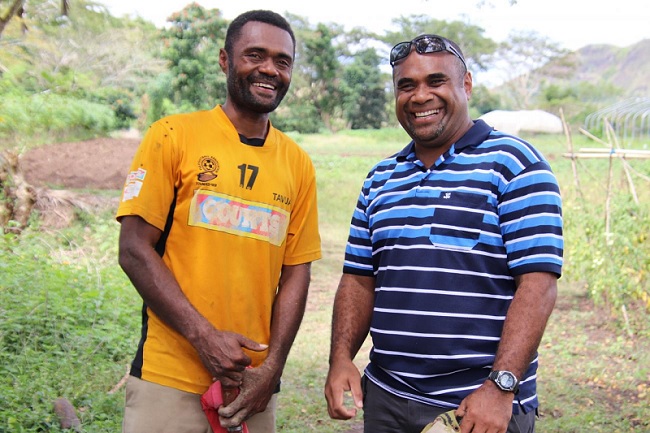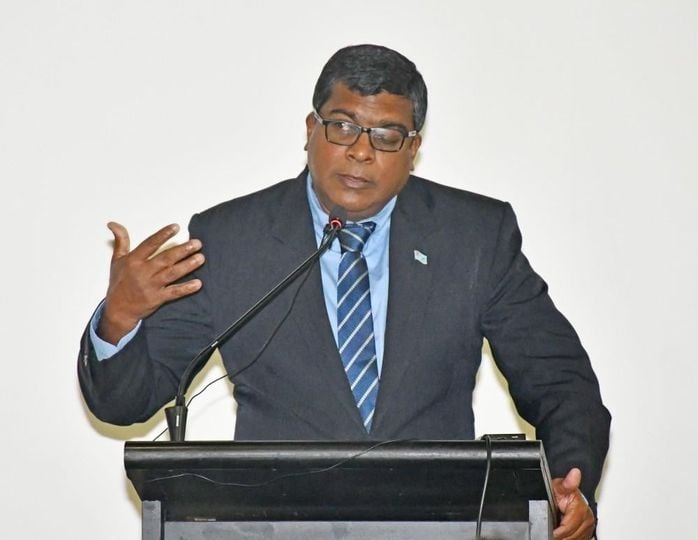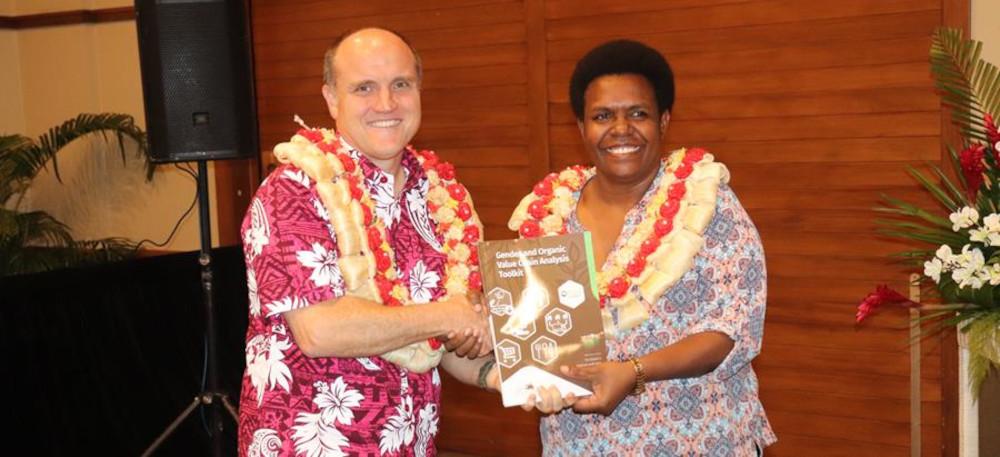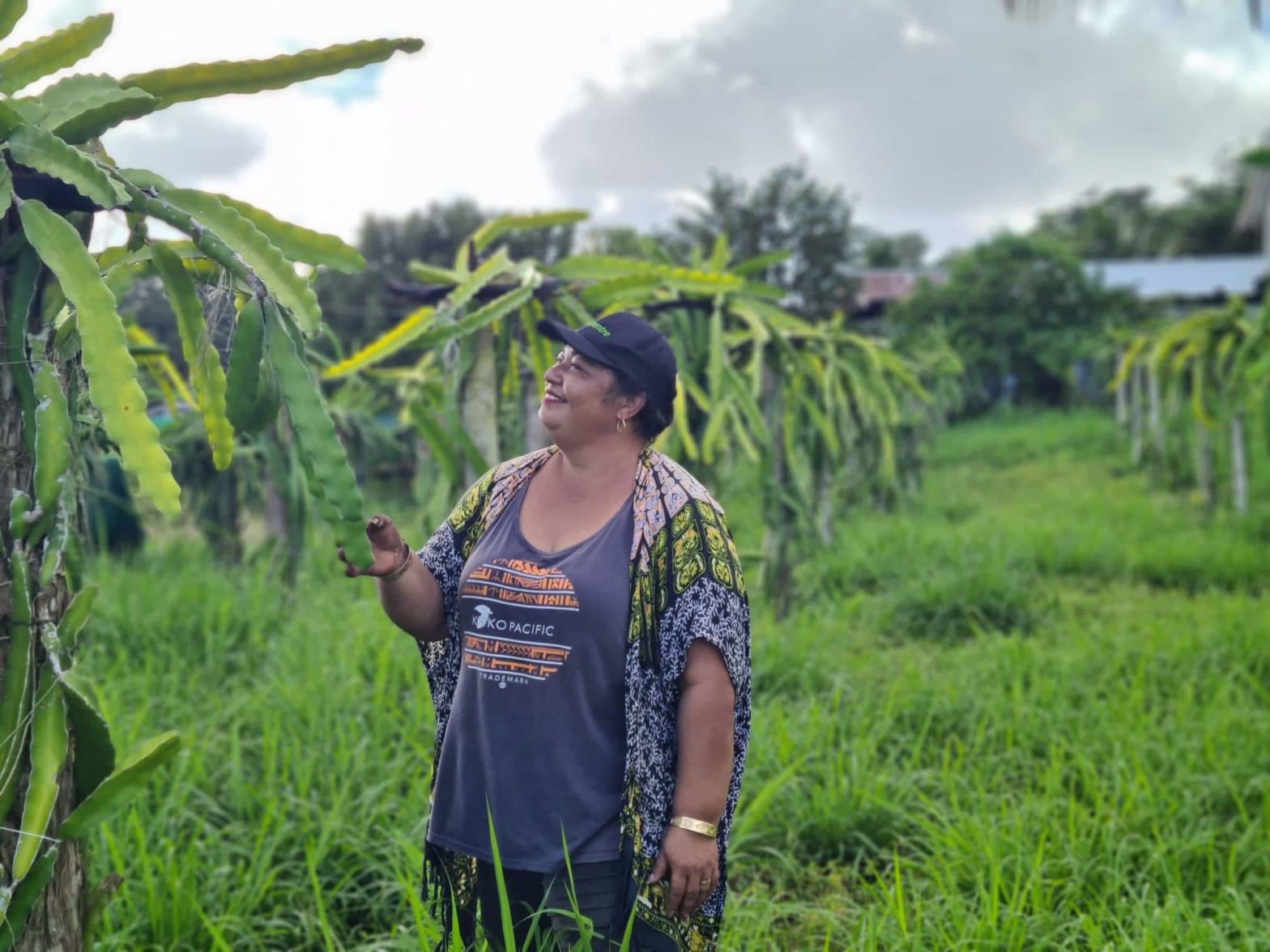For more than a decade, Emosi Ravato and his fellow farmers along the fertile Sigatoka valley have toiled the land to meet the burgeoning demand for vegetable crops in Fiji. “I come from a family of sugarcane farmers,” he says. “But I made the switch to high-value cash crops because it’s lucrative.”
Ravato is a recipient of the Australian funded Integrating protected cropping systems into high-value vegetable value chains in the Pacific and Australia project under the Centre for International Agricultural Research (ACIAR).
The three-year project implemented by the Pacific Community’s (SPC) Land Resources Division in Fiji, Tonga and Samoa looks into the effective use of protective structures, such as greenhouses, walk-in tunnels and other farm-related landscapes that work well for each individual country. These structures help farmers grow high-value crops such as tomatoes, cucumbers, lettuce and capsicums year-round while at the same time opening up access to high-value markets in the tourism industry.
The project is a collaboration with a sister project managed by the Land Resources Division on Integrated Crop Management to provide capacity building and awareness programmes to all local growers.
An anticipated outcome from the ACIAR-SPC project is to increase interest in adopting innovative cropping systems, in addition to the capacity to supply crops consistently – while maintaining product quality – that meet market specifications and improve the livelihoods of vegetable growers and sustain the supply of high-value cash crops through a longer production season.
Ravato’s financial benefits have greatly improved after his venture into protective cropping. “I am able to plant and harvest my crops during the offseason when the demand is quite high, and the prices are good,” states Ravato. “It pays my bills, puts my children through to school and I managed to build my house.”
Due to limits in the growing season in Fiji, Samoa and Tonga, a large share of the demand for high-value vegetables is met by imports. In 2015, Fiji imported close to 300 tonnes of tomatoes worth FJD$2.5 million(US$1.1 million), with prices of local tomatoes ranging from FJD1.71 (US$0.81c/kg in the main season to FJD$5.00(US$2.50) during the offseason.
“We hope that by the end of the protected cropping trials in Fiji, Samoa and Tonga, the project will promote the viability of protected cropping systems in the region and help bridge these import shortfalls,” said David Hickes, the Protected Cropping (SPC) Economist.
While cropping for small and medium-scale farmers is still new, Hickes hopes farmers are able to choose from different types of protected cropping structures and scales of production.
“Growing crops in greenhouses in tropical conditions is very different from growing crops in the open field, and we recommend that farmers adopt a sequential approach,” concluded Hickes. “They can start with a lower cost and less technical structure to gain experience and knowledge in protected cropping before taking further steps to the more advanced production systems.”
ACIAR Research Program Manager for Horticulture, Irene Kernot hopes the initiative will further develop protective cropping technologies and make them suitable for tropical areas, particularly for smallholder farmers who don’t often have a lot of lands but want to maximise its productivity.
“ACIAR is excited to see where these technologies can go in the future and from my perspective, this project has started to prove the technology. The growing of vegetables is important, not only for smallholders but for the planet. Around the world, we don’t produce enough vegetables for everyone to have a healthy diet, and projects such as this increase smallholder vegetable productivity. Increased productivity can also have financial returns for smallholders,” said Kernot.
As Fiji continues to battle the relentless spread of the COVID-19 pandemic, Ravato counts himself blessed that he has been able to weather the storm.
“We’re taking each day at a time. We were a bit affected when the hotels and resorts closed down, but the domestic market has been able to sustain us.”
A training manual detailing lessons learned from the protective cropping system is expected to be distributed and emulated among farms in the region when the project ends this year. The manual will contain basic guidelines for protected cropping production in Pacific Island countries, in addition to recommended approaches for extension agriculture officers to use.
This story was published at SPC on 27 August 2021, reposted via PACNEWS.




